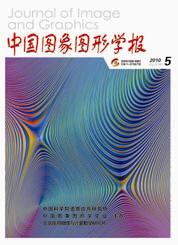
一种应用机载LiDAR数据和高分辨率遥感影像提取城市绿地信息的方法
余柏蒗1,2, 刘红星2, 吴健平1(1.华东师范大学地理信息科学教育部重点实验室, 上海 200062;2.Department of Geography, Texas A&M University, College Station, Texas, USA 77843) 摘 要
提出了一种新的面向对象的城市绿地信息两阶段提取方法。该方法分阶段使用高分辨率遥感影像的光谱和2维形态信息以及机载LiDAR数据的3维形态信息作为分类依据。第1阶段,影像首先被分割为对象,对象被分类为无阴影的植被、阴影下的植被、水体、建筑物、空地和阴影6类地物;无阴影的植被和阴影下的植被合并为城市绿地对象,在第2阶段,将LiDAR数据产生的归一化数字表面模型nDSM与绿地对象叠加,计算每个对象的3维形态属性,进一步将绿地对象细分为草坪、灌木和乔木。以美国休斯敦中心城区为例,介绍了方法流程。精度分析表明,绿地的分类精度达到9346%;方法中的主要误差来源于遥感影像当中的建筑物阴影以及生成数字地形模型时所产生的误差。
关键词
A Method for Urban Vegetation Classification Using Airborne LiDAR Data and High Resolution Remote Sensing Images
YU Bailang1,2, LIU Hongxing2, WU Jianping1(1.Key Laboratory of Geographic Information Science, Ministry of Education, East China Normal University, Shanghai 200062;2.Department of Geography, Texas A&M University, College Station, Texas, USA, 77843) Abstract
The urban vegetation is a principal biological component of the urban landscape. Identifying and mapping the urban vegetation are important to urban management and planning. This paper presents a new object-based two-stage method to classify urban vegetation using airborne LiDAR data and high resolution aerial photographs through a case study of downtown Houston, USA. By exploiting the spectral information plus 2D geometric attributes from high resolution aerial photographs and 3D morphological information from airborne LiDAR data, a detailed and accurate classification of urban vegetation has been achieved. In the first stage, the aerial photographs are segmented into image objects. Based on the spectral and 2D geometric attributes, these objects are divided into six categories: non-shaded vegetation, shaded vegetation, water, building, open space, and shade. Vegetation objects, including non-shaded and shaded vegetation, are derived separately. In the second stage, the normalized Digital Surface Model derived from airborne LiDAR data is introduced to characterize the 3D geometric properties (height and roughness) of each vegetation object. Based on these properties, the vegetation objects are further classified into trees, shrubs/hedges, and grass-covered lawns. The overall classification accuracy of vegetation is analyzed and reported as high as 93.46%. The sources of errors are ascribed to the shade in aerial photo and the miscalculation of Digital Terrain Model from LiDAR data. This research suggests that the combination of morphological information of LiDAR and the spectral information from image data renders a powerful tool for a detailed investigation of urban vegetation.
Keywords
urban vegetation object-based classification two-stage classification LiDAR high resolution remote sensing image
|



 中国图象图形学报 │ 京ICP备05080539号-4 │ 本系统由
中国图象图形学报 │ 京ICP备05080539号-4 │ 本系统由